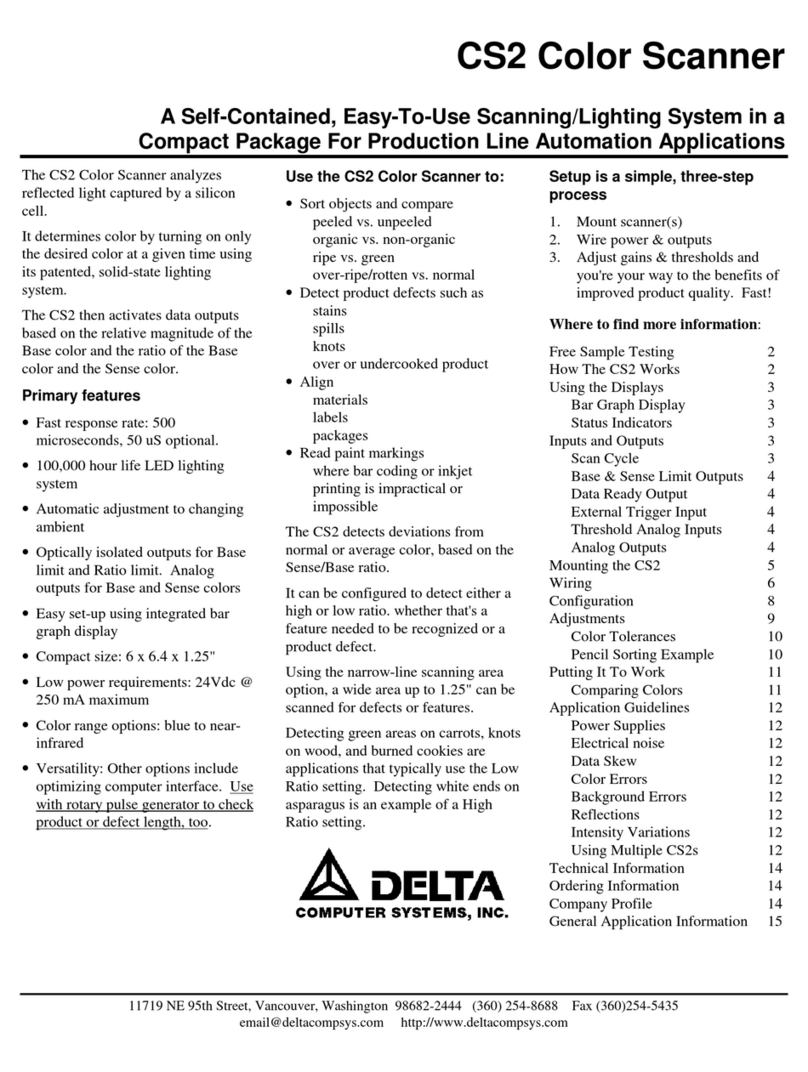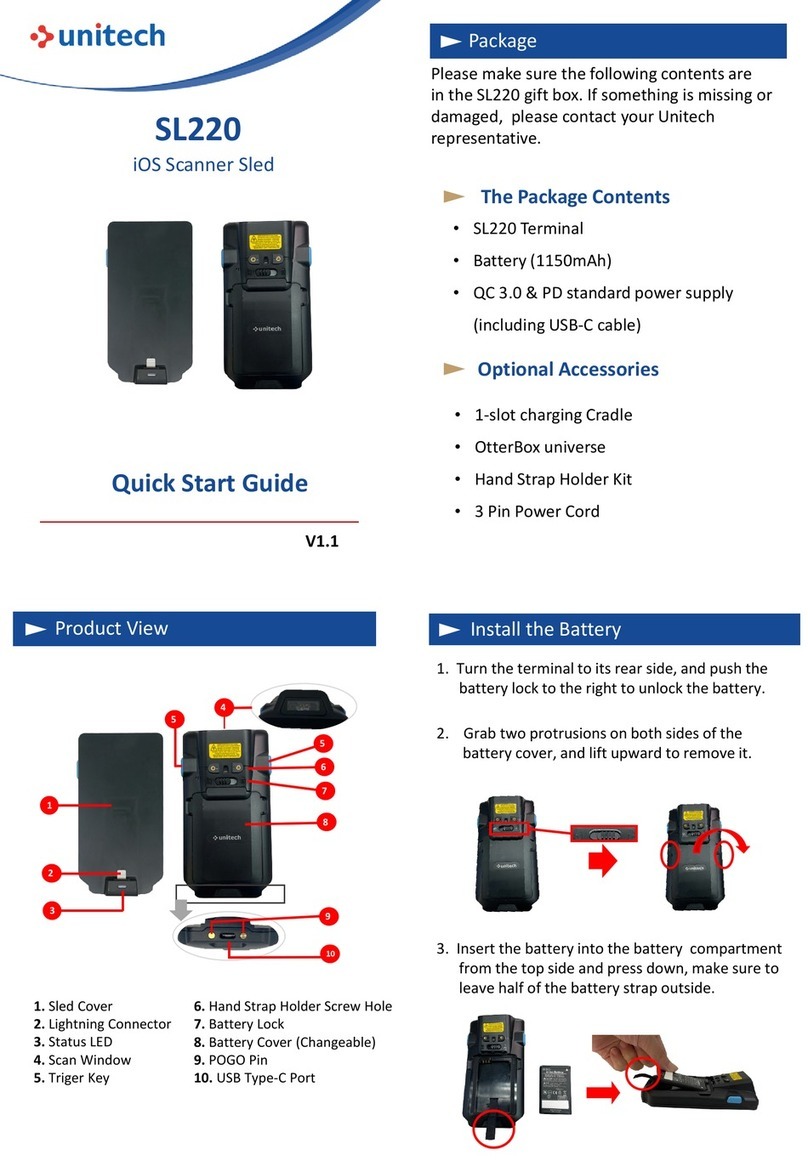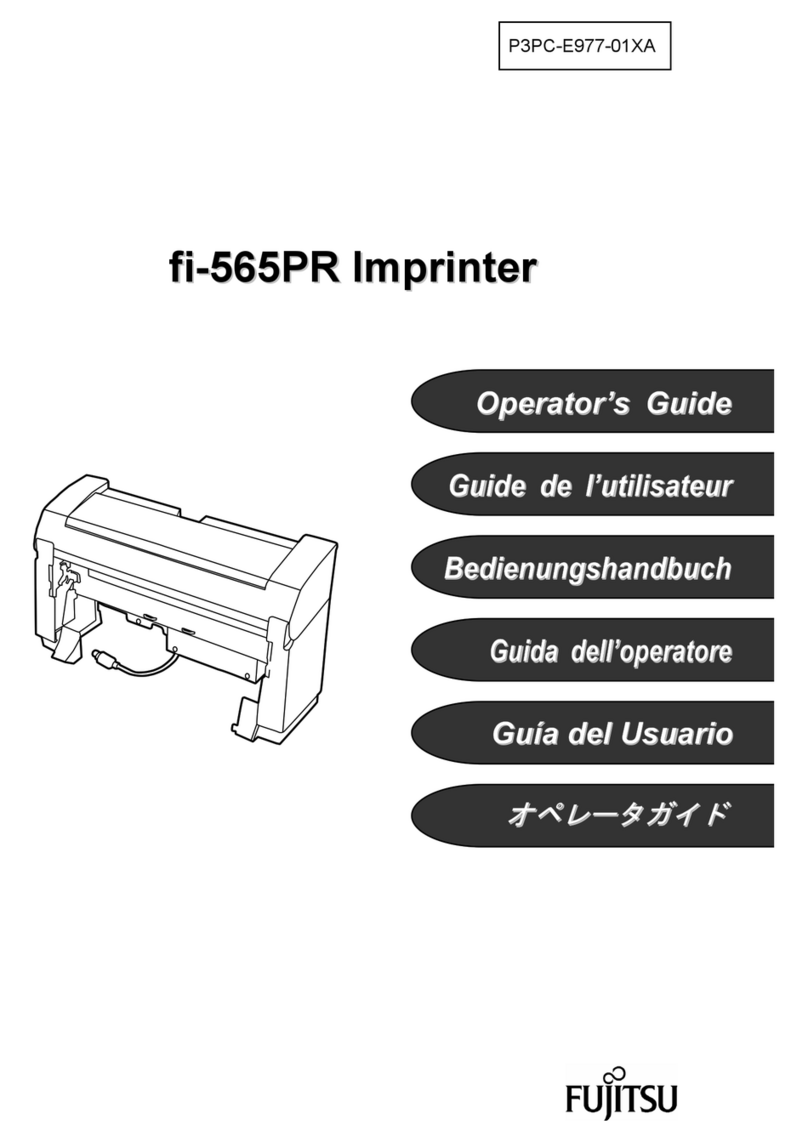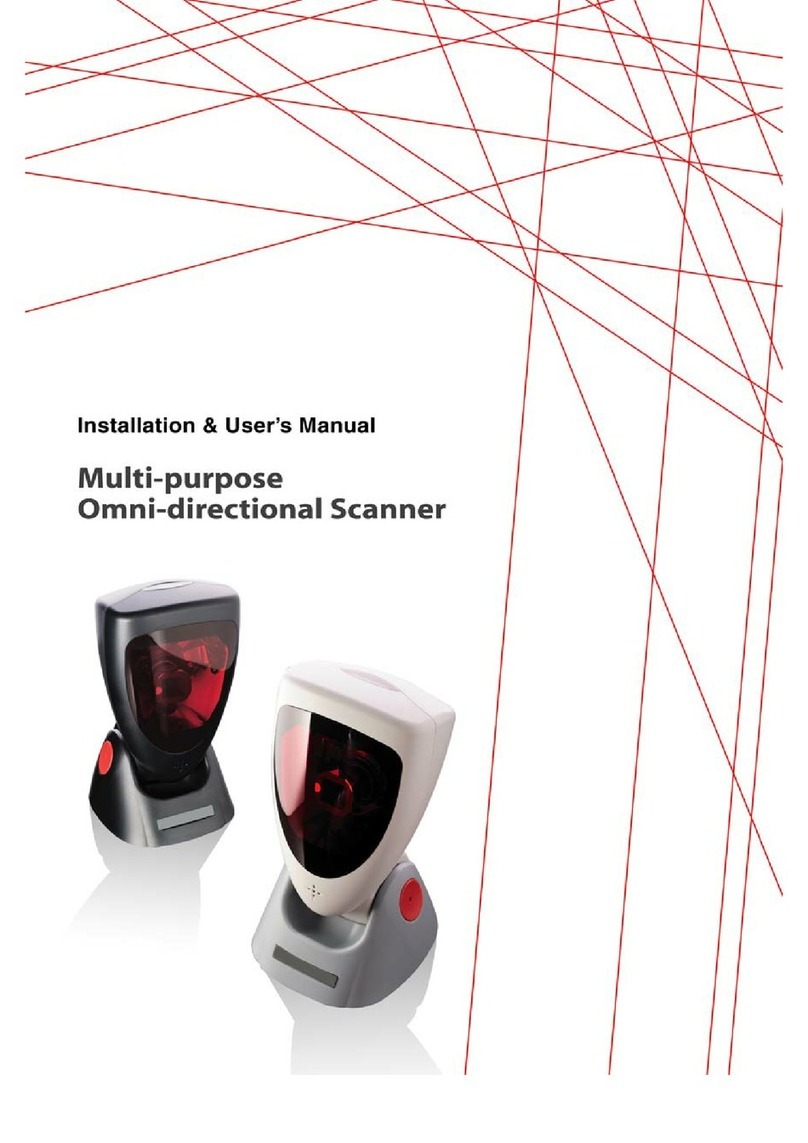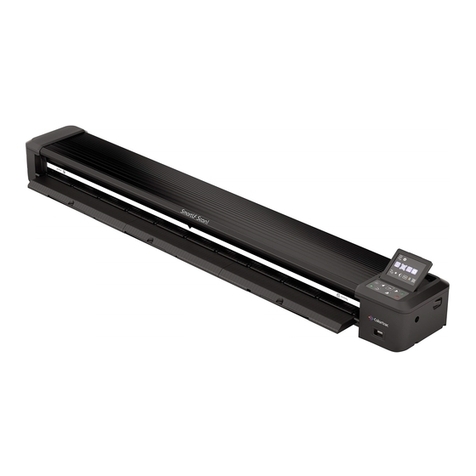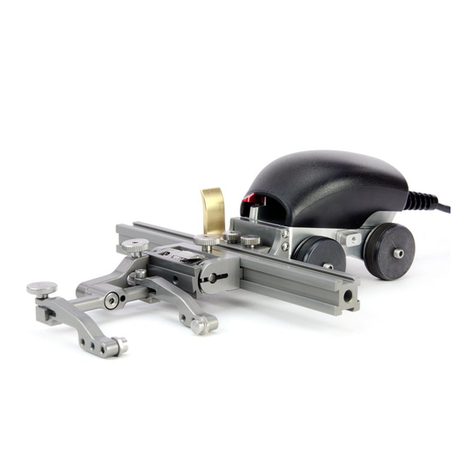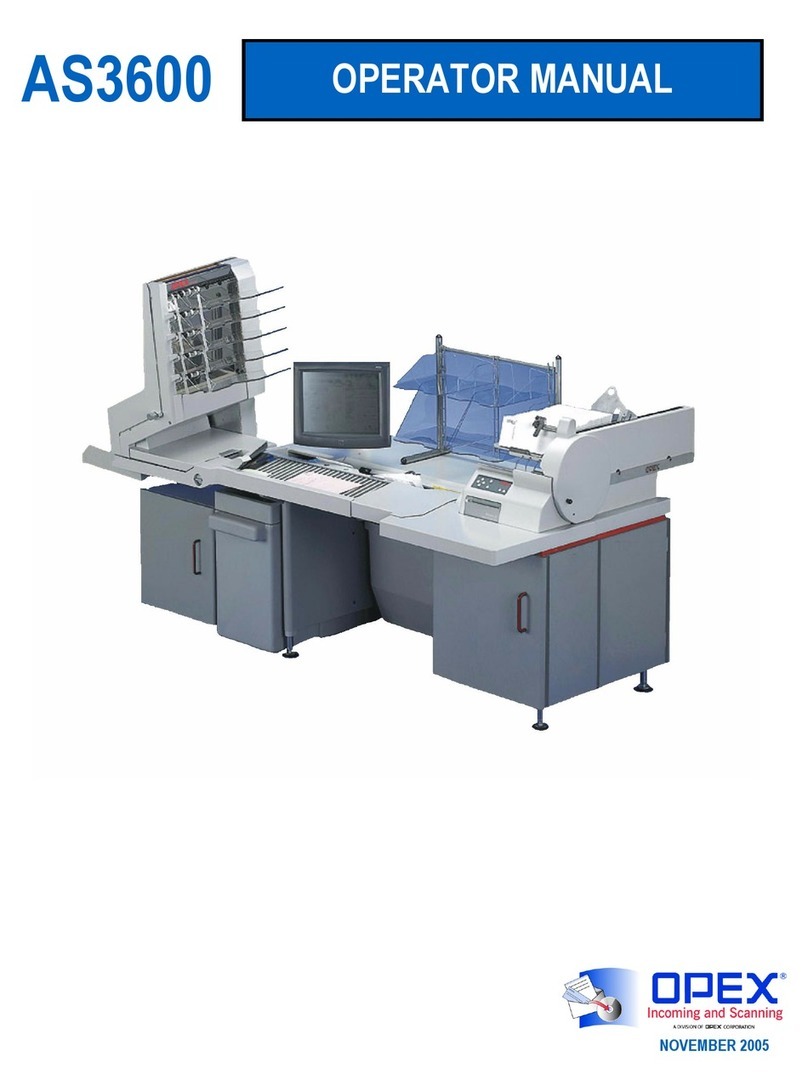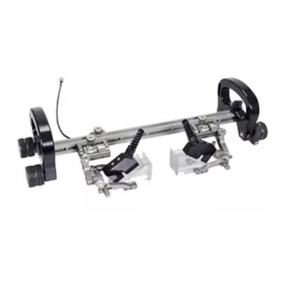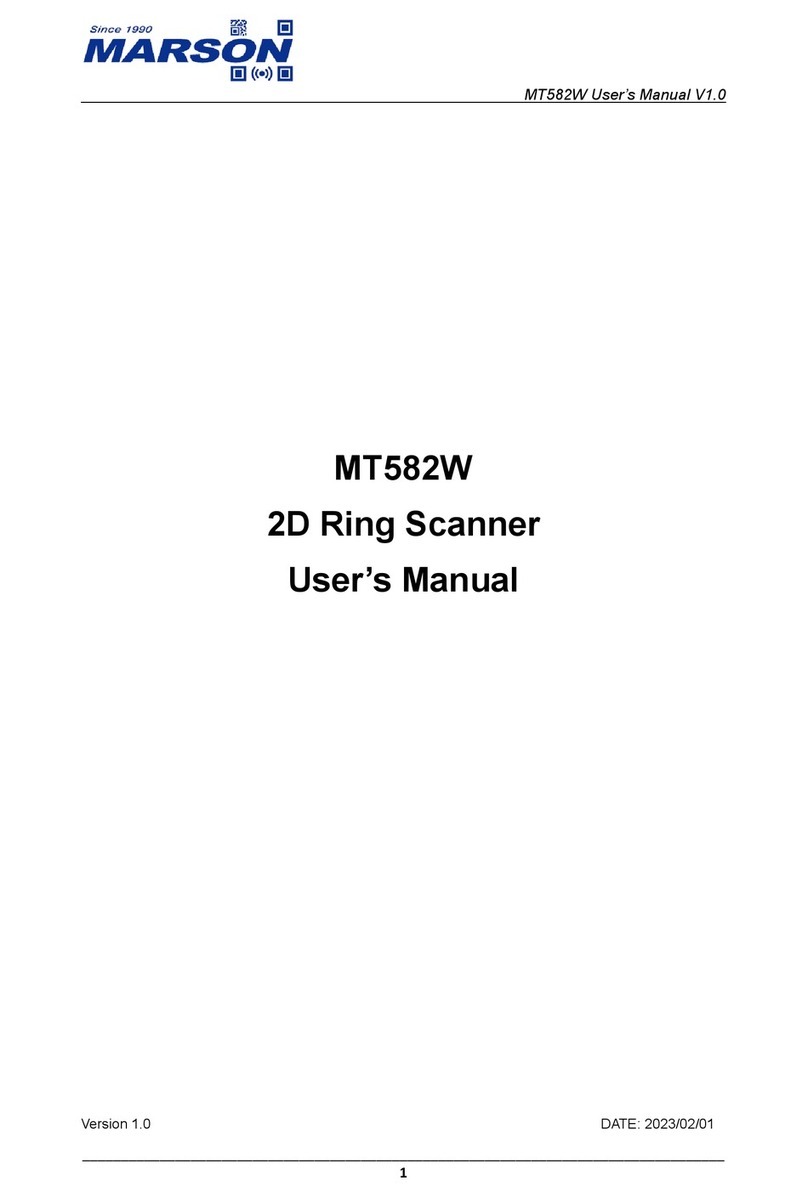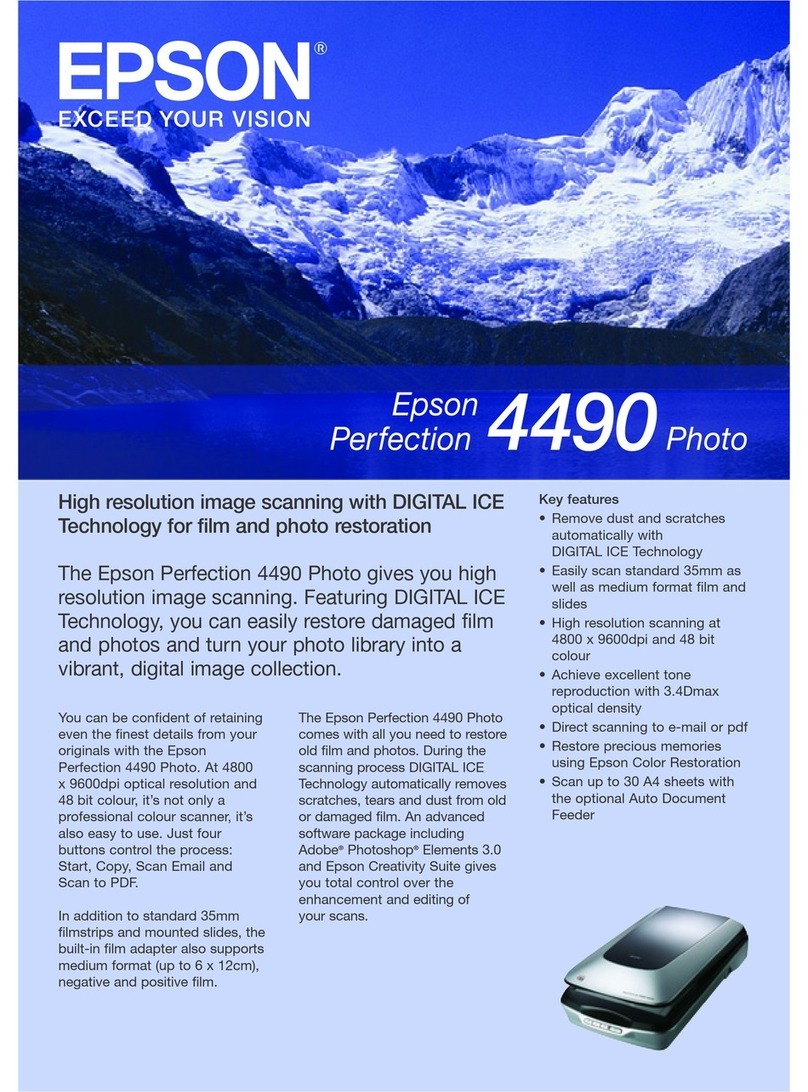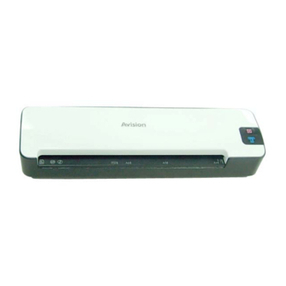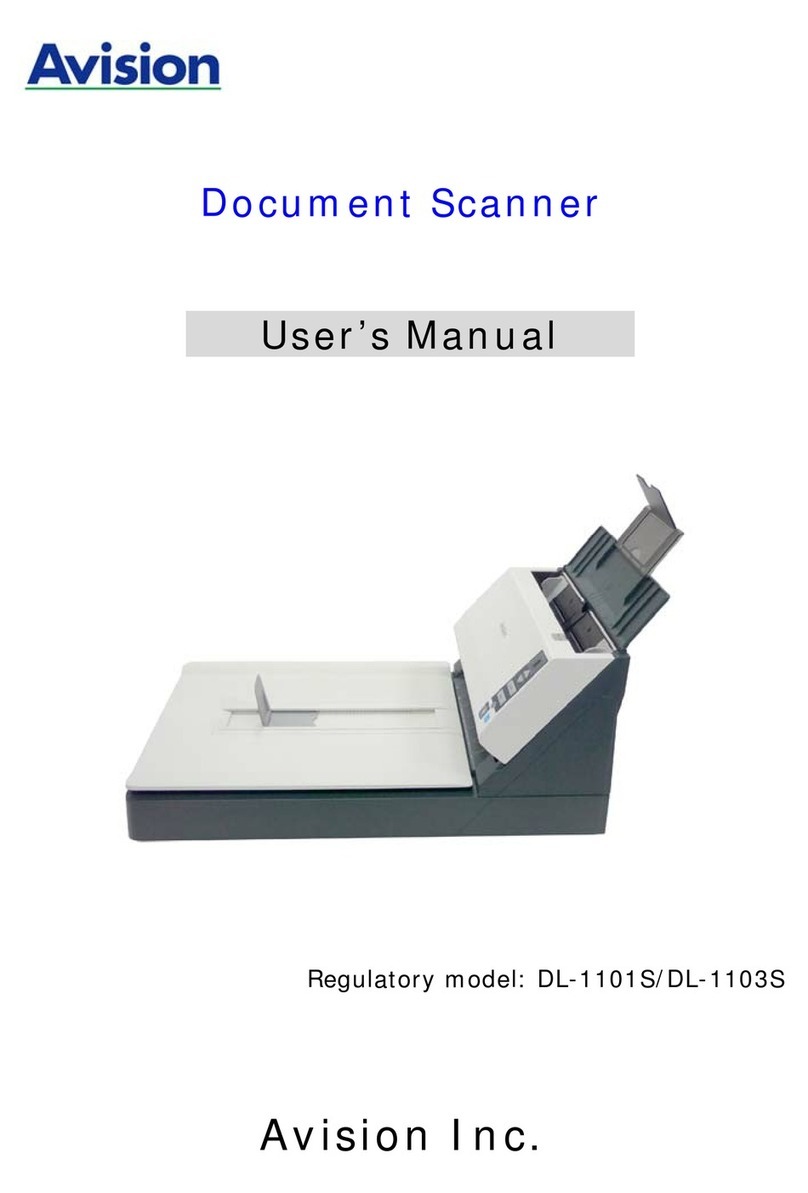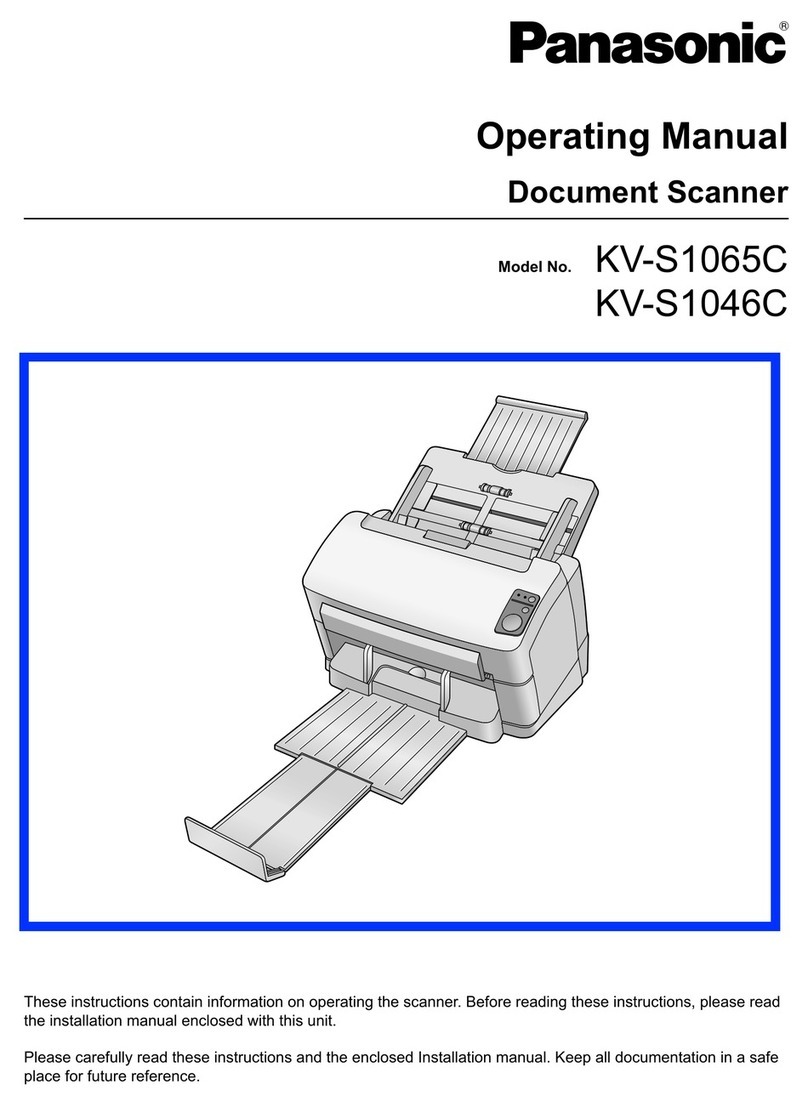Delta DVPDNET-SL User manual

DVPDNET-SL
DeviceNet Network Scanner
Operation Manual
DVP-0204520-04
2022-7-15


DeviceNet Network Scanner DVPDNET-SL
DVP-PLC Operation Manual
Warning
This operation manual provides functional specifications, installation, basic operation and settings, as
well as an introduction to relevant network protocols.
DVPDNET-SL is an OPEN TYPE device. Therefore it should be installed in an enclosure free of airborne
dust, humidity, electric shock and vibration. The enclosure should prevent non-maintenance staff from
operating the device (e.g. key or specific tools are required for operating the enclosure) in case danger
and damage on the device may occur.
Please read this instruction carefully before use and follow this instruction to operate the device in order
to prevent damages on the device or injuries to staff.
Table of Contents
1INTRODUCTION ..................................................................................................1
1.1 Features ............................................................................................................1
1.2 Basic Functions of DVPDNET-SL ............................................................................1
1.3 Specifications .....................................................................................................2
2PRODUCT PROFILE & OUTLINE ...........................................................................3
2.1 Dimension .........................................................................................................3
2.2 Product Profile ..................................................................................................3
2.3 DeviceNet Connection Port ...................................................................................3
2.4 Address Switch...................................................................................................4
2.5 Function Switch ..................................................................................................4
2.6 Digital Indicator..................................................................................................5
2.7 Extension Port ....................................................................................................5
3INSTALLATION ...................................................................................................6
3.1 Connecting DVPDNET-SL to PLC ............................................................................6
3.2 Installing DVPDNET-SL and PLC on DIN Rail ...........................................................6
3.3 Connecting to DeviceNet Connection Port...............................................................7
4CONFIGURATION OF DVPDNET-SL ......................................................................8
4.1 Configuration through DeviceNet Builder Software ..................................................8
4.1.1 Selection of Communication Channel...............................................................8
4.1.2 Setup of Scan Module....................................................................................9
4.1.3 Setup of Scan List....................................................................................... 10
4.1.4 Input Table and Output Table ....................................................................... 11
4.2 Input and Output Mapping Areas ........................................................................ 12
4.2.1 Data Mapping Areas .................................................................................... 12

DeviceNet Network Scanner DVPDNET-SL
DVP-PLC Operation Manual
4.2.2 I/O Mapping Area Assignment (in Master Mode) .............................................13
4.2.3 I/O Mapping Area Assignment (in Slave Mode) ...............................................14
5SENDING EXPLICIT MESSAGE FROM LADDER DIAGRAM................................... 15
5.1 Principle of Explicit Message Sending...................................................................15
5.2 Structure of Explicit Message..............................................................................16
6BIT-STROBE COMMAND.................................................................................... 23
6.1 Principle of Bit-Strobe........................................................................................23
7DISPLAY OF NODE STATUS ON NETWORK........................................................ 24
7.1 Display of Status of Nodes in Scan List ................................................................24
7.2 Status of DVPDNET-SL.......................................................................................24
8SETUP OF SLAVE MODE .................................................................................... 25
9SETUP OF EXTENDED BAUD RATE..................................................................... 27
9.1 Setup of Extended Baud Rate (in Master Mode) ....................................................27
9.2 Setup of Extended Baud Rate (in Slave Mode) ......................................................29
10 APPLICATION EXAMPLE ................................................................................... 32
10.1 How to Construct a DeviceNet Network...............................................................32
10.2 How to Configure DeviceNet Network .................................................................33
10.3 Ladder Diagram Program ..................................................................................39
11 ERROR DIAGNOSIS & TROUBLE-SHOOTING ..................................................... 40
11.1 LED Indicator Diagnosis....................................................................................40
11.2 Digital Display Diagnosis...................................................................................41

DeviceNet Network Scanner DVPDNET-SL
DVP-PLC Operation Manual
1
1Introduction
1. Thank you for choosing Delta DVPDNET-SL. To ensure correct installation and operation of DVPDNET-SL,
please read this chapter carefully before using your DVPDNET-SL.
2. DVPDNET-SL running on the left side of PLC can serve as the DeviceNet master or slave with PLC MPU
together. It can be configured through DeviceNet software.
1.1 Features
Serves as DeviceNet master by connecting to the PLC and supports standard DeviceNet protocol.
DeviceNet Builder provides convenient graphic configuration interface; automatically scans and
recognizes all slaves in the bus.
Supports DeviceNet Master and Slave modes.
Supports eight types of baud rates: 10 kbps, 20 kbps, 50 kbps, 125 kbps, 250 kbps, 500 kbps, 800kbps,
1M kbps
1.2 Basic Functions of DVPDNET-SL
DVPDNET-SL DeviceNet Network Scanner can be used both as a master or a slave on the DeviceNet
network. When being used as a master, it supports following functions:
Automatically carrying out the data exchange with PLC MPU. User needs only to operate the special
register in PLC to realize the monitoring of all slaves.
Supports client function of explicit message.
Supports slave to establish all kinds of I/O connections: polled, bit-strobed, change of state and cyclic.
As the connection medium between DeviceNet Builder configuration software and DeviceNet network.
The configuration software is able to directly configure the network through DVPDNET-SL.
Sending explicit messages for reading/writing the data in slave through PLC ladder diagrams.
Max length for output data and input data are both 380 bytes.
When being used as a slave, it supports the following functions:
Explicit message serve and Group 2 only serve connection mode.
Automatically exchanging data with the PLC. The user needs only to edit the D register in the PLC
without using FROM/TO instruction.
Polling
Max lengths for output data and input data are both 255 bytes.

DeviceNet Network Scanner DVPDNET-SL
DVP-PLC Operation Manual
2
1.3 Specifications
PLC that DVPDNET-SL supports
Item Specification
PLC Model
DVPDNET-SL supports the PLC which can be extendable on its left side
(E.g. DVP-SV, DVP-EH2_L, DVP-SX2, DVP-SA2, DVP10MC11T, DVP-SV3 a
nd
DVP-SX3 and etc.)
DeviceNet Interface
Item Specification
Transmission
method
CAN
Electrical
isolation
500V DC
Interface Removable connector (5.08mm)
Transmission
cable
TAP-CB01 cable and TAP-CB02 cable are recommended. (The shielded wire
must be grounded and the cable should be away from the power line)
Voltage
DeviceNet network provides direct current: 11~25V, 28mA (typical value),
125mA impulse current (24 VDC)
DeviceNet Communication
Item Specification
Message type
Explicit connection, IO polled connection, bit-strobe connection, COS/CC
connection
Baud rate
Standard mode: 125 kbps; 250 kbps; 500 kbps
Extended mode: 10 kbps; 20 kbps; 50 kbps; 125 kbps; 250 kbps; 500 kbps;
800kbps; 1M kbps
Environment
Item Specification
Noise immunity
ESD (IEC 61131-2, IEC 61000-4-2): 8KV Air Discharge
EFT (IEC 61131-2, IEC 61000-4-4): Power Line: 2KV, Digital I/O: 1KV
Analog & Communication I/O: 1KV
Damped-Oscillatory Wave: Power Line: 1KV, Digital I/O: 1KV
RS (IEC 61131-2, IEC 61000-4-3): 26MHz ~ 1GHz, 10V/m
Operation 0ºC ~ 55ºC (temperature); 50 ~ 95% (humidity); pollution degree 2
Storage -25ºC ~ 70ºC (temperature); 5 ~ 95% (humidity)
Vibration/shock
resistance
Standard: IEC 61131-2, IEC 68-2-6 (TEST Fc)/ IEC 61131-2 & IEC 68-2-27
(TEST Ea)
Certificates IEC 61131-2, UL508

DeviceNet Network Scanner DVPDNET-SL
DVP-PLC Operation Manual
3
2Product Profile & Outline
2.1 Dimension
3
2
0
1
4
9
8
6
7
0
MS
NS
5
DR 0
DR 1
x10
IN 1
IN 0
DVPDNET
x10
5
3
2
4
0
1
8
6
7
9
1
2.2 Product Profile
1. Model name
2. Extension port
3. Power, MS and NS LED indicators
4. DIN rail clip
5. Digital indicator
6. Extension clip
7. Address switch
8. Function switch
9. DeviceNet connection port
2.3 DeviceNet Connection Port
The connector is used for the connection to the DeviceNet network. Wire by using the connector enclosed
with DVPDNET-SL.
PIN Signal Color Content
1
2
3
4
5
1 V- Black 0V DC
2 CAN_L Blue Signal-
3 SHIELD - Shielded
4 CAN_H White Signal+
5 V+ Red 24V DC
Note: Either end of the communication cable should be connected with the terminal resistor of
121Ωand the resistors should be connected between “Signal+” and “Signal-”.

DeviceNet Network Scanner DVPDNET-SL
DVP-PLC Operation Manual
4
2.4 Address Switch
The switch is used for setting up the node address of DVPDNET-SL on the DeviceNet network. Range: 00 ~
63 (64 ~ 99 are forbidden).
Switch setting Content
9
1
6
4
5
0
0
9
1
3
2
7
8
2
5
6
4
3
7
8
0 … 63 Valid DeviceNet node address
64…99 Invalid DeviceNet node address
Example:
If you need to set the node address of DVPDNET-SL to 26, simply switch the corresponding switch of x101
to 2 and the corresponding switch of x100to 6.
Note:
Please set up the node address when the power is switched off. After the setup is completed, re-power
DVPDNET-SL.
When DVPDNET-SL is operating, changing the setting of node address is invalid.
Use the slotted screwdriver to rotate the switch carefully in case you scratch the switch.
2.5 Function Switch
The function switches are for:
Setting up the work mode (IN0)
Setting up the baud rate of the DeviceNet network (via DR0 ~ DR1)
DR1 DR0 Baud rate
OFF
OFF
125kbps
OFF
ON
250kbps
ON
OFF
500kbps
ON ON
Entering the mode of extended baud rate
( see Chapter 9)
IN0
ON
When the slave is off-line, the I/O data in
the buffer area will be held.
OFF When the slave is off-line, the I/O data in
the buffer area will be cleared.
IN1 Reserved
Note:
After setting up the function switch is complete, re-power DVPDNET-SL and then the setting is effective.
Use the slotted screwdriver to adjust the DIP switch carefully in case you scratch the switch.

DeviceNet Network Scanner DVPDNET-SL
DVP-PLC Operation Manual
5
2.6 Digital Indicator
The digital indicator provides following two functions:
1) .
2)
Note:
When the module works normally, the digital display will show its own node ID.
When "E1" and "03" are on display continuously, it indicates that the error that "E1" refers to
occurs in the slave of node 03.
When the error codes such as "E7" and "E1" are on display, please refer to Section 11.2 for
correction.
2.7 Extension Port
The extension port is mainly used on connecting DVPDNET-SL to the PLC.
Displaying the node address and error of DVPDNET-SL
DVPDNET
POWER
MS
NS
Displaying the error of the slave.

DeviceNet Network Scanner DVPDNET-SL
DVP-PLC Operation Manual
6
3Installation
3.1 Connecting DVPDNET-SL to PLC
Adjust the extension clip on the left side of the PLC.
Meet the extension port of the PLC with DVPDNET-SL as shown in the figure below.
Fasten the extension clip.
DVPDNET DVP28SV
RUN
STOP
3.2 Installing DVPDNET-SL and PLC on DIN Rail
Use 35mm DIN rail.
Open the DIN rail clip on the PLC and DVPDNET-SL. Insert the PLC and DVPDNET-SL onto the DIN
rail.
Clip up the DIN rail clips on the PLC and DVPDNET-SL to fix the PLC and DVPDNET-SL on the DIN rail,
as shown below.
DVPDNET
35mm DIN rail
DVP28SV
RUN
STOP

DeviceNet Network Scanner DVPDNET-SL
DVP-PLC Operation Manual
7
3.3 Connecting to DeviceNet Connection Port
The colors on the PINs on the DeviceNet connection port match the colors of the connection cables.
Make sure you connect the cable to the right PIN.
We recommend you also apply Delta’s power module in the connection.

DeviceNet Network Scanner DVPDNET-SL
DVP-PLC Operation Manual
8
4Configuration of DVPDNET-SL
4.1 Configuration through DeviceNet Builder Software
Before DVPDNET-SL starts to work, it must be configured through DeviceNet Builder software.
Note:
Different PLC corresponds to different device addresses. For details, please refer to Input and Output
Mapping Areas in Section 4.2. We take DVP-SV as the PLC for description below.
4.1.1 Selection of Communication Channel
Max 8 DVPDNET-SL modules can be connected to the left side of the PLC and every DVPDNET-SL is a
communication channel. When there are three DVPDNET-SL modules connected to PLC’s left side and
DeviceNet Builder software is online, the following dialog box will pop up for selecting the current channel.
Parameter
Explanation
Unit No.
The unit No. of the first DVPDNET-SL (DNET Scanner) on the left side of PLC is 1.
PLC’s left side can be connected with max 8 DVPDNET_SL. The further
DVPDNET-S is from the PLC, the larger its unit No is.
Name DVPDNET-SL’s name in DeviceNet Builder software.
Code
For displaying the current mode of DVPDNET-SL: master mode or slave mode.
Input
mapping
The register areas which PLC MPU distributes to DVPDNET-SL. The areas are
mainly used to receive the message from DeviceNet Slaves and the data from
slaves on the bus will be automatically updated to these registers.
Output
mapping
The register areas which the PLC has assigned to DVPDNET-SL. The areas are
mainly used to control DeviceNet slave and the control data in these registers will
be automatically sent to DeviceNet slave in the bus. Slave will take some action
accordingly after receiving the data.

DeviceNet Network Scanner DVPDNET-SL
DVP-PLC Operation Manual
9
4.1.2 Setup of Scan Module
The following dialog is for setting DVPDNET-SL’s current mode: master mode or slave mode.
Parameter Explanation
Master mode For setting DVPDNET-SL as master.
Scan interval time
The cycle time for master to send and receive the real time data
after real-time data connection is successful.
Expected Packet Rate
The result value of the parameter multiplied by 4 is the timeout time.
(Unit: ms)
Master assumes that the slave is offline if it receives no response
from slave after the timeout time is elapsed.
Extension baud rate
The parameter is effective only when DVPDNET is in master mode.
Selecting “Enable” activates the function.
Select an appropriate baud rate according to actual demand.
Slave mode For setting DVPDNET-SL as slave
Bit-strobed Reserved; no actual purpose now.
Polled
The parameter is effective only when DVPDNET is in slave mode.
The filled byte numbers correspond to the data length of outputs and
inputs as DVPDNET-S is in slave mode. “TxSize” corresponds to
“Output length” and “RxSize” corresponds to “Input length”.
Change of State/Cyclic Reserved; no actual purpose now.
Mapping
Available for AH models only; no actual purpose now.
Note: These parameters and the configuration information are downloaded to DVPDNET-SL together.

DeviceNet Network Scanner DVPDNET-SL
DVP-PLC Operation Manual
10
4.1.3 Setup of Scan List
Double click the existing icon of DVPDNET-SL in the DeviceNet Builder interface and then the following
dialog box appears for configuring the scan module.
Parameter Explanation
Available nodes
All already scanned slaves appear in “Available list”.
After the configuration data is downloaded to DVPDNET-SL, the slave in
“Available nodes” will not conduct the real-time data exchange with
DVPDNET-SL.
Scan list
After the configuration data is downloaded to DVPDNET-SL, the slave in
“Scan list” will conduct the real-time data exchange with DVPDNET-SL.
Address
The station No. for the slave on the DeviceNet bus.
Node name
The node name that the node address corresponds to.

DeviceNet Network Scanner DVPDNET-SL
DVP-PLC Operation Manual
11
4.1.4 Input Table and Output Table
Select the device in “Scan list” and then the data length of input and output of the device will be displayed
respectively in the lower part of the following dialog box.
Parameter
Explanation
Output Table
PLC’s registers and the corresponding output data are shown in “Output
table”. The values in PLC’s registers will be sent to slave in real time as the
control data of the slave.
Input Table
PLC’s registers and the corresponding input data are shown in “input table”.
The data that slave sends to master will be updated in PLC’s registers in real
time.
Register The number of the registers in PLC; “D6289_H” indicates the high byte of
register D6289; “D6289_L” indicates the low byte of register D6289.
Device image For displaying the data type and the name of current slave; “Poll” means the
polled data.

DeviceNet Network Scanner DVPDNET-SL
DVP-PLC Operation Manual
12
4.2 Input and Output Mapping Areas
4.2.1 Data Mapping Areas
The input and output data mapping introduced here is the data mapping between the PLC and DVPDNET-SL.
The mapping relation keeps unchanged and users are not allowed to revise the areas.
Max 8 units of DVPDNET-SL modules can be connected on PLC’s left side. After all DVPDNET-SL modules
are connected to the PLC, the PLC will assign data mapping areas to each DVPDNET-SL.
DVPDNET DVP28SV
RUN
STOP
DVPDNET
DVPDNET
DVPDNET
DVPDNET
DVPDNET
DVPDNET
DVPDNET
When DVPDNET-SL is used with different PLC, the input and output mapping areas for it are
different. The details are as follows:
When the PLC is DVP-SV, DVP-EH2_L, DVP-SX2, DVP-SA2 or DVP10MC11T, registers
D6000~D9999 are occupied. The number of the first DVPDNET-SL on the left side of the
PLC is 1 and the number of the DVPDNET-SL module close to the left side of the first
DVPDNET-SL is 2, and subsequent DVPDNET-SL modules are No. 3, No. 4 and so on.
Unit No Mapping devices
Output mapping Input mapping
1 D6250 ~ D6497 D6000 ~ D6247
2 D6750 ~ D6997 D6500 ~ D6747
3 D7250 ~ D7497 D7000 ~ D7247
4 D7750 ~ D7997 D7500 ~ D7747
5 D8250 ~ D8497 D8000 ~ D8247
6 D8750 ~ D8997 D8500 ~ D8747
7 D9250 ~ D9497 D9000 ~ D9247
8 D9750 ~ D9997 D9500 ~ D9747
When the PLC is DVP-SV3 and DVP-SX3, registers D16000~D19999 are occupied. The
number of the first DVPDNET-SL on the left side of the PLC is 1 and the number of the
DVPDNET-SL module close to the left side of the first DVPDNET-SL is 2, and subsequent
DVPDNET-SL modules are No. 3, No. 4 and so on.
Unit No Mapping devices
Output mapping Input mapping
1
D16250 – D16497
D16000 – D16247
2
D16750 – D16997
D16500 – D16747
3
D17250 – D17497
D17000 – D17247
4
D17750 – D17997
D17500 – D17747
5
D18250 – D18497
D18000 – D18247

DeviceNet Network Scanner DVPDNET-SL
DVP-PLC Operation Manual
13
Unit No Mapping devices
Output mapping Input mapping
6
D18750 – D18997
D18500 – D18747
7
D19250 – D19497
D19000 – D19247
8
D19750 – D19997
D19500 – D19747
4.2.2 I/O Mapping Area Assignment (in Master Mode)
When the PLC is DVP-SV, DVP-EH2_L, DVP-SX2, DVP-SA2 or DVP10MC11T, and the DVPDNET-SL of
number 1 is in master mode, the data mapping areas are assigned as shown in the following table.
Input mapping area Output mapping area
Devices
in PLC Function Data
length
Register No
in PLC Function Data length
D6000~D6031
Explicit response
message program
32 words D6250~D6281
Explicit request
message program
32 words
D6032~D6035
Status of nodes in the
scan list
4 words D6282~D6285
Bit-strobe
command
4 words
D6036
DVPDNET-SL status
1 word
D6286
Reserved
1word
D6037~D6226 DeviceNet input data 190 words D6287~D6476 DeviceNet output
data
190 words
D6227~D6247
Reserved
21 words
D6477~D6497
Reserved
21 words
When the PLC is DVP-SV3 and DVP-SX3, and the DVPDNET-SL of number 1 is in master mode, the
data mapping areas are assigned as shown in the following table.
Input mapping area Output mapping area
Devices
in PLC
Function Data
length
Devices
in PLC
Function Data
length
D16000~D16031 Explicit response
message program
32 words D16250~D16281
Explicit request
message program
32 words
D16032~D16035 Status of nodes in
the scan list
4 words D16282~D16285
Bit-strobe command 4 words
D16036
DVPDNET-SL
status
1 word D16286 Reserved 1word
D16037~D16226
DeviceNet input
data
190 words D16287~D16476
DeviceNet output
data
190 words
D16227~D16247
Reserved
21 words
D16477~D16497
Reserved
21 words
Note:
If the number of the DVPDNET-SL is 2, the numbers of the registers in the two tables above will all be added
by 500 respectively; if the number of the DVPDNET-SL is 3, the numbers of the registers in the two tables
above will all be added by 1000 respectively; if the number of the DVPDNET-SL is 4, the numbers of the
registers in the two tables above will all be added by 1500 respectively and so on.

DeviceNet Network Scanner DVPDNET-SL
DVP-PLC Operation Manual
14
4.2.3 I/O Mapping Area Assignment (in Slave Mode)
When the PLC is DVP-SV, DVP-EH2_L, DVP-SX2, DVP-SA2 or DVP10MC11T, and the DVPDNET-SL is in
slave mode, the data mapping areas are assigned as shown in the following table and these devices are for
the real-time data exchange.
Unit No
Input mapping area
Output mapping area
Initial device
Max data length
Initial device
Max data length
1
D6000
255 Bytes
D6250
255 Bytes
2
D6500
255 Bytes
D6750
255 Bytes
3
D7000
255 Bytes
D7250
255 Bytes
4
D7500
255 Bytes
D7750
255 Bytes
5
D8000
255 Bytes
D8250
255 Bytes
6
D8500
255 Bytes
D8750
255 Bytes
7
D9000
255 Bytes
D9250
255 Bytes
8
D9500
255 Bytes
D9750
255 Bytes
When the unit No. of the DVPDNET_SL is 1, the control data which DeviceNet master sends out will be
updated in real time in PLC’s devices among which D6000 is the initial device. In the meanwhile, the values in
PLC’s devices among which D6250 is the initial device will be automatically sent back to DeviceNet master. In
this wa y, the real-time data exchange is realized.
When the PLC is DVP-SV3 or DVP-SX3, and the DVPDNET-SL is in slave mode, the data mapping areas
are assigned as shown in the following table and these devices are for the real-time data exchange.
Unit No
Input mapping area
Output mapping area
Initial device
Max data length
Initial device
Max data length
1
D16000
255Bytes
D16250
255Bytes
2
D16500
255Bytes
D16750
255Bytes
3
D17000
255Bytes
D17250
255Bytes
4
D17500
255Bytes
D17750
255Bytes
5
D18000
255Bytes
D18250
255Bytes
6
D18500
255Bytes
D18750
255Bytes
7
D19000
255Bytes
D19250
255Bytes
8
D19500
255Bytes
D19750
255Bytes
When the unit No. of the DVPDNET_SL is 1, the control data which DeviceNet master sends out will be
updated in real time in PLC’s devices among which D16000 is the initial device. In the meanwhile, the values
in PLC’s devices among which D16250 is the initial device will be automatically sent back to DeviceNet master.
In this way, the real-time data exchange is realized.

DeviceNet Network Scanner DVPDNET-SL
DVP-PLC Operation Manual
15
5Sending Explicit Message from Ladder Diagram
DVPDNET-SL supports the sending of explicit messages through WPL programs.
Note:
Different PLC corresponds to different device addresses. For details, please refer to Input and Output
Mapping Areas in Section 4.2. We take DVP-SV as the PLC for description below.
5.1 Principle of Explicit Message Sending
DVPDNET DVP28SV
RUN
STOP
DeviceNet
RJ12
VFD-B
DNA02
Explicit request message
(PLC DVPDNET-SL)
Explicit response message
(DVPDNET-SL PLC)
Explicit request message
from master
Explicit response message
from slave
①: The PLC sends the explicit request message based on WPL program to DVPDNET-SL.
②: Then DVPDNET-SL transfers the request message to the target equipment.
③: The target equipment processes the request message and replies with a response message to
DVPDNET-SL.
④: The PLC stores the response message from DVPDNET-SL to D register to finish one explicit message
transmission.

DeviceNet Network Scanner DVPDNET-SL
DVP-PLC Operation Manual
16
5.2 Structure of Explicit Message
You can edit explicit messages in “explicit request message editing area” and “explicit response message
editing area”. See the table below for the corresponding relation between the two areas and PLC devices. If
you transmit the request message to be sent out to D6250 ~ D6281, DVPDNET-SL will fill the response
message data to D6000 ~ D6031.
PLC device Mapping area Mapping length
D6000 ~ D6031 Explicit response message editing area 64 bytes
D6250 ~ D6281 Explicit request message editing area 64 bytes
1) Structure of request message
See the table below:
PLC device Request Message
15 14
13
12 11
10
9 8 7 6 5 4 3 2 1 0
D6250
Message Header
ReqID Command
D6251 Port Size
D6252 Service Code MAC ID
D6253
Message Data
High byte of Class ID Low byte of Class ID
D6254 High byte of Instance ID Low byte of Instance ID
D6255 Reserved Attribute ID (optional)
D6256 ~ D6281 Service Data
Command: Fixed to “01Hex”.
ReqID: The request ID. Whenever an explicit message is sent out, the message will be given a ReqID
for DVPDNET-SL to identify every message. For the next explicit message to be sent out, you have to
change the ID. ReqID = 0 indicates that DVPDNET-SL will not send out any explicit message. Range
of ReqID: 00Hex ~ FFHex.
Size: The length of the message, starting from D6253. The high bytes of D6255 are reserved. When
the data length is being calculated, D6255 is counted as 1 byte. The maximum data length is 58 bytes.
Errors will occur when the length is longer than 58 bytes. Unit: byte.
Port: The communication port. Fixed to “00Hex".
MAC ID: The node address of the target equipment on DeviceNet.
Service Code: The service code of the explicit message. See the meanings of the codes in the table
below:
Service Code Explanation
01Hex Read all attributes (Get_Attribute_All)
02Hex Set up all attributes (Set_Attribute_All)
0EHex Read a single attribute (Get_Attribute_Single)
10Hex Set up a single attribute (Set_Attribute_Single)
Table of contents
Other Delta Scanner manuals
